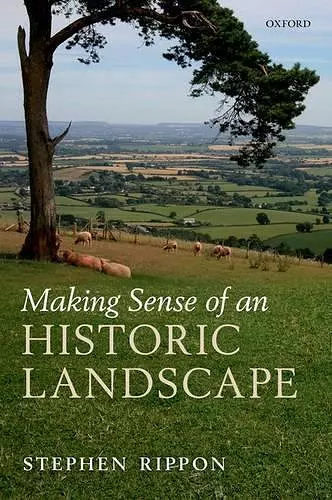Making Sense of an Historic Landscape
Format:Hardback
Publisher:Oxford University Press
Published:12th Jul '12
Currently unavailable, and unfortunately no date known when it will be back

Why is it that in some places around the world communities live in villages, while elsewhere people live in isolated houses scattered across the landscape? How does archaeology analyse the relationship between man and his environment? Making Sense of an Historic Landscape explores why landscapes are so varied and how the landscape archaeologist or historian can understand these differences. Local variation in the character of the countryside provides communities with an important sense of place, and this book suggests that some of these differences can be traced back to prehistory. In his discussion, Rippon makes use of a wide range of sources and techniques, including archaeological material, documentary sources, maps, field- and place-names, and the evidence contained within houses that are still lived in today, to illustrate how local and regional variations in the 'historic landscape' can be understood. Rippon uses the Blackdown Hills in southern England, which marked an important boundary in landscape character from prehistory onwards, as a specific case study to be applied as a model for other landscape areas. Even today the fields, place-names, and styles of domestic architecture are very different either side of the Blackdown Hills, and it is suggested that these differences in landscape character developed because of deep-rooted differences in the nature of society that are found right across southern England. Although focused on the more recent past, the volume also explores the medieval, Roman, and prehistoric periods.
This book deals with the fascinating question of how cultural landscapes are formed over the long term, and why neighbouring regions can have quite different characteristics ... there is no doubt that this book will have lasting value as a starting point for work on this landscape region. * Sam Turner, Antiquity *
This book, then, is a landmark study - simultaneously an excellent exposition of the holistic approach, a fresh treatment of early medieval landscape history in the southwest (leaving aside Cornwall) and a demonstration of the contribution which this part of the world can make to our understanding of pattern and process in English early medieval landscape history as a whole. It well deserves an honoured place on any serious landscape historians bookshelf. * Andrew Fleming, Cambridge Archaeological Journal *
A particular value of this book and its new methods is in providing a temporal/geographic framework on which many aspects of historical research can continue to be fitted. This is an excellent and practical contribution to Historic Landscape studies and all the more worthy for being directed at the Blackdown Hills * R.W. Carter, Somerset Archaeology and Natural History *
the identification in this case study of the significance of long-lasting local cultures in forming the landscape makes an important contribution to a developing direction for research, and offers fertile ground for further work. * Susan Oosthuizen, Journal of Medieval Archaeology *
ISBN: 9780199533787
Dimensions: 241mm x 165mm x 27mm
Weight: 880g
416 pages